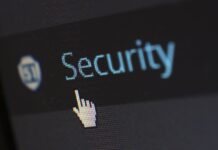How safe do you think you are online? Whatever you say, you’re possibly wrong. 50% of people say they don’t feel safe online, and 31% don’t think their online activities are private. Don’t get us started on the conspiracy theorists. In reality – more people should fear their online activities. 88.8 million people are victims of cybercrimes annually. A large percentage of those are ransomware attacks, accounting for more than 800,000 attacks. There are too many statistics for us to give in this introduction. Instead, read on to learn about six reasons you’re not safe online.
Weak Passwords
Strong passwords are the most elementary concept, but still, today, weak passwords plague us. One study found that 46% of people reported having their passwords stolen, and 35% identified it as the cause of security breaches. The stronger the password, the longer time to crack your password – that’s the general rule.
If you use a simple password like 123456, you might as well open the door for them. Those weak passwords are still in widespread usage, according to a recently published NordPass report, and hackers have software to hack advanced passwords, let alone one like 123456.
Solution: The password should combine uppercase, lowercase, number, and other special characters. Use a password manager to generate strong, unique passwords for all your accounts that you don’t have to remember.
Outdated Software
Using old software on your devices increases the chances of cyberattacks. According to one study, 60% of all security breaches come from outdated software.
Software developers release updates to fix bugs and security vulnerabilities and add new features. By not doing them, your system might still have some of the vulnerabilities to be exploited. A report Avast recently released noted that 55% of PC applications are out-of-date.
Solution: Turn on automatic updates for your operating system, browser, and other software. Always look for updates and install them to receive the most up-to-date security patches. Microsoft research discovered devices with aging software are most easily infected by malware, around three times more. Updating your software will also make it work better and ensure its functionality.
Phishing Scams
Another massive risk involved in online security is phishing. Malicious emails or messages luring you into revealing sensitive information are where these scams primarily happen. Statistics show that 22% of all cybercrime comes from phishing attacks. These messages are often disguised to appear as if they come from a bank or some well-known website – when, in fact, cybercriminals are behind them.
Solution: Look at the email address – does it write words phonetically, make lots of spelling mistakes, or generally not make sense? If you are not sure, check online or email the company. If you can’t find a website or Google the email address, it’s probably phishing. But you should tell by the email address at first glance.
Unsecured Networks
Any cyberattacker can access the data that goes through your device – and one study found that 24.7% of Wi-Fi hotspots globally don’t use any encryption at all. You’ll find those networks in cafes, airports, on the train, etc. These networks aren’t usually encrypted, so anyone can easily download information sent through them.
Solution: Be cautious when using public Wi-Fi or any network. We’ve focused on Wi-Fi hotspots, but they’re not the only potential location for unsecured networks. The best advice we can give you is to use a VPN.
Lack of Two-Factor Authentication (2FA)
With multi-factor authentication (2FA), you can add a layer of protection to your accounts. This method requires two different forms of identification to access your account: something you know (like a password), and, more importantly, but not limited to, a possession, like any device. Obviously, accounts with 2FA are infinitely more secure and unlikely to be compromised.
Solution: Turn on 2FA for all accounts that have it. Most of the time now, accounts will ask you to do it, and you might even agree to it without realizing it. You’ll often get a code to your mobile, which you then enter (along with your password). According to Google, turning on 2FA blocks 99.9% of all automated attacks.
Social Media Oversharing
Posting too much information about our lives can leave us vulnerable to cybercriminals. Your birthdate, address, or pet’s name can be used to guess passwords and answer security questions. 74% of Facebook users were unaware that the platform tracked their likes and other characteristics. Hackers can use this information!
Solution: Watch what you publish on the internet. Always limit what you share online using privacy settings, and do not post personal details publicly. Our best advice is to review your social media profiles regularly and remove any information hackers could use against you. The Federal Trade Commission (FTC) cautions that sharing too much information can expose you to identity theft and other scams.
The thing is, being safe online means you need to be proactive and have a certain level of suspicion regarding potential threats. But most people don’t. Cautionary actions like these will better ensure you don’t become one of the 80% affected. Always remember that online safety is never a one-and-done process, and staying up-to-date on the latest threats remains central to safeguarding your digital life.
Find a Home-Based Business to Start-Up >>> Hundreds of Business Listings.














































